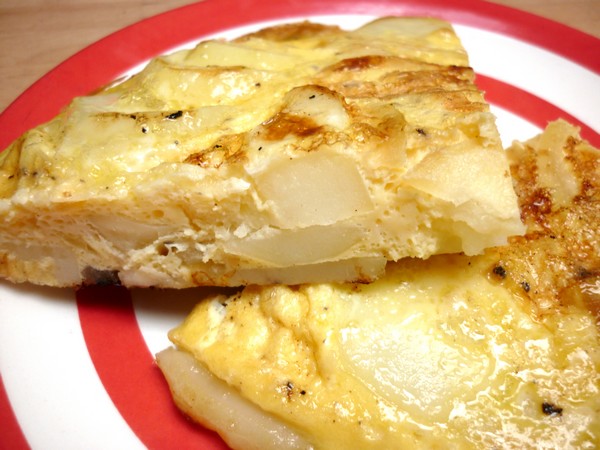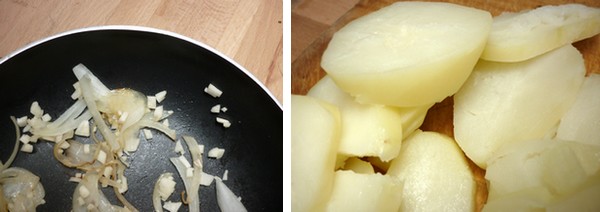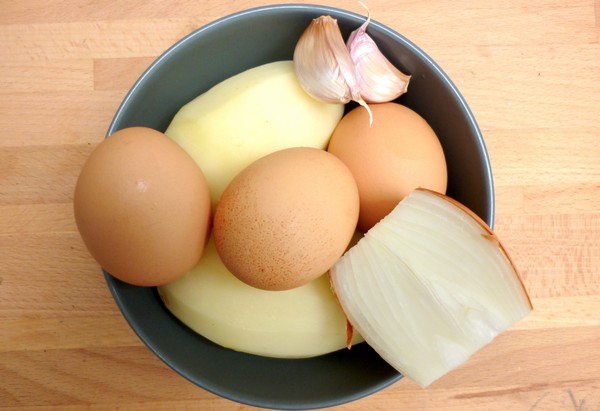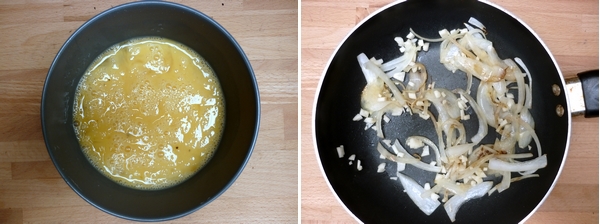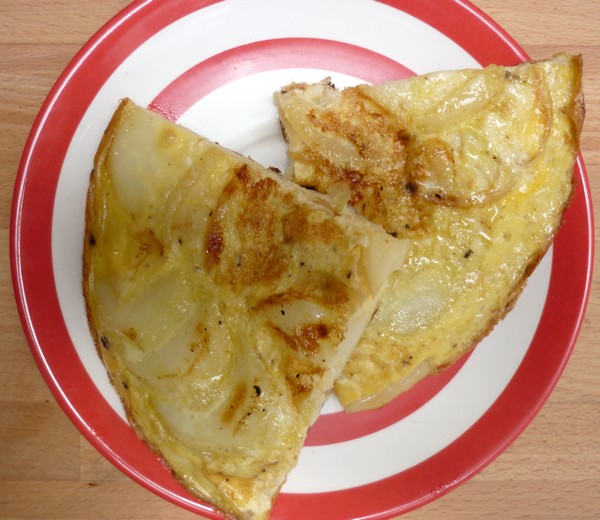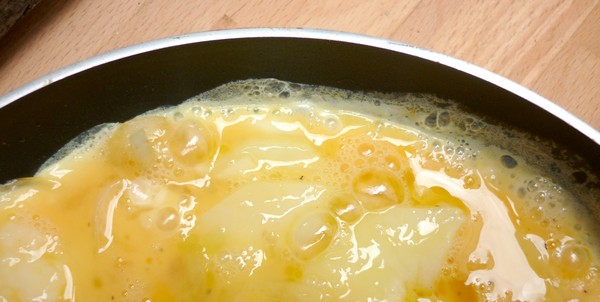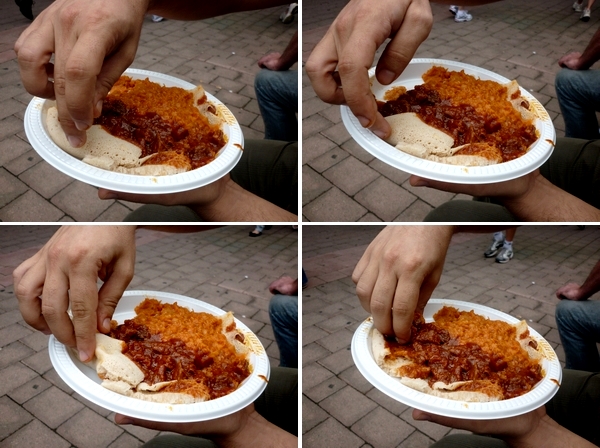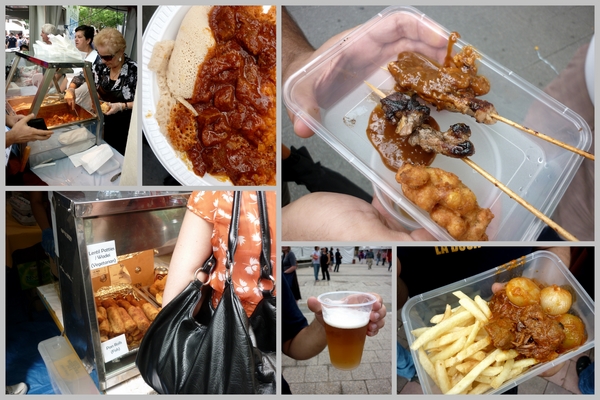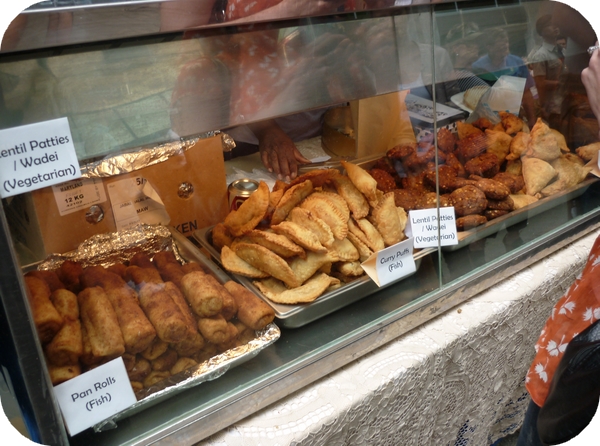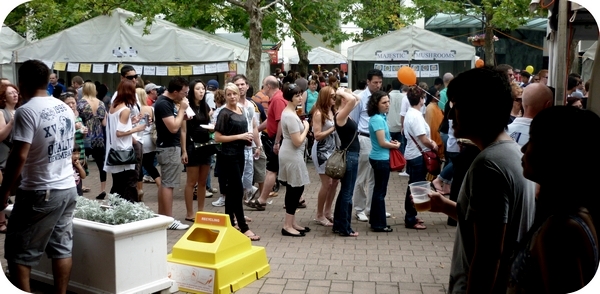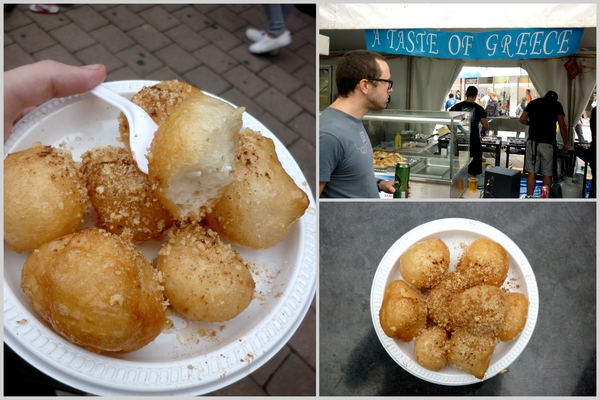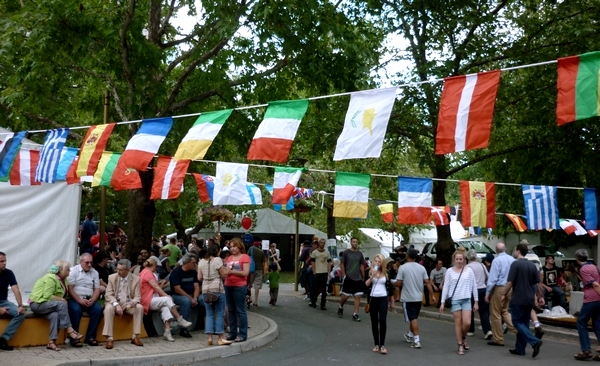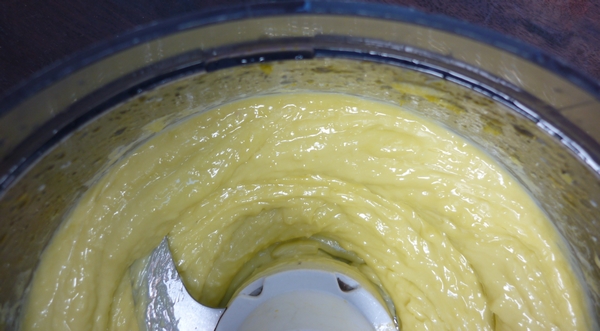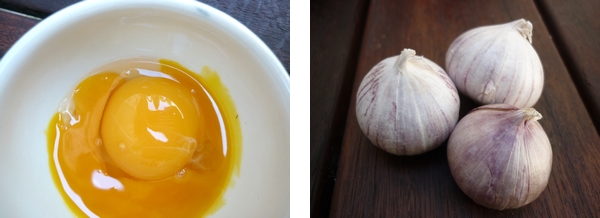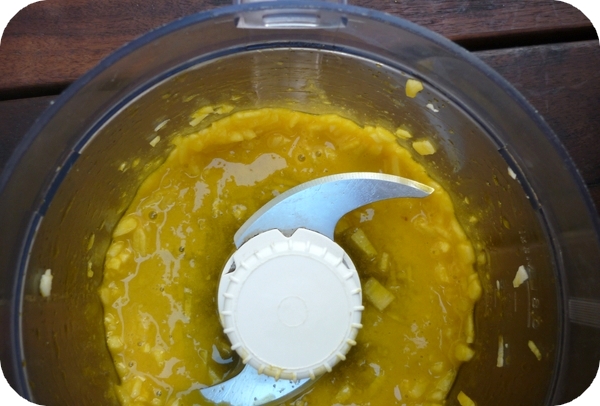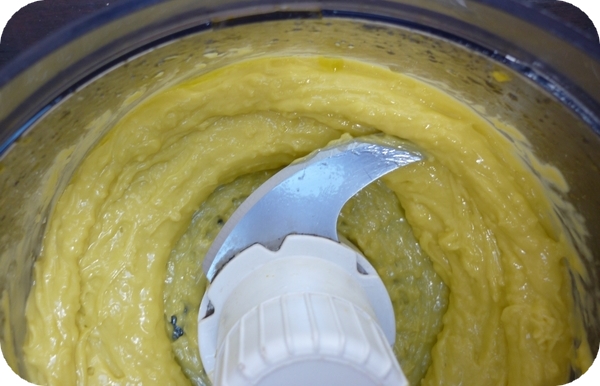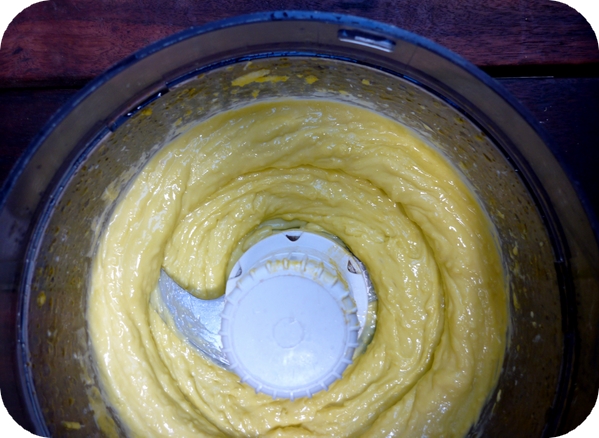It has always amazed me how eager the Sydney food scene is to absorb reinterpret the so-called ‘traditional’ and ‘peasant’ foods of other nations into overpriced, ‘exotic’ wank. Besides the prohibitive prices of foods like tapas, Brazilian bbq and Cuban food, these reincarnations of cuisines which claim to be ‘inspired’ or ‘influenced’ by various countries almost always miss the point of the cuisine they claim to ‘draw inspiration’ from.
In Spain, where dinner is generally served at around 10pm, bars will offer tapas; small, simple, tasty, cheap morsels of food that you eat standing up to stave off hunger and stop you getting too drunk. This fulfils the dual purpose of soaking up alcohol and stimulating thirst. The point of tapas is not to fill you up. It is not even really to have a ‘meal’. People don’t sit down at a table, order a variety of drinks and food and then have them all brought over, eat, drink and pay at the end. In Australia, this style of serving is rare, and tapas becomes just an item on a menu, not a cultural practice.
What baffles me about this mistranslations is that restaurateurs and I presumably have a similar experience when we go to a foreign country. We’ll be walking the streets of whatever town in Spain as the bars will start to fill up with people socialising, drinking and snacking. The overall impression is of vibrancy. Life. Hospitality. Community. I look around me and think ‘wouldn’t it be great if I could bottle this and take it back home?’
Obviously we all view holidays through rose-tinted glasses. But it seems to me that many restaurateurs are viewing theirs with dollar-sign eyeballs. They want to bottle this experience and take it back to Australia, but they also want to pour half of it out, dilute it with water, mark up the price and sell it. They are translating a cuisine completely literally and without any of the nuance that comes from the culture it’s a part of. They take the food of Spain and plonk it down on an Australian restaurant table.
Now, it’s a fair point that Australian diners may not want tapas-style dining, just tapas-style food. Clearly a restaurant cannot force people to order this way or they won’t have any customers. I have noticed though that more and more pubs are serving tapas, and this seems more in line with tapas’ whole ethos.
The most basic tapas recipe is tortilla de patatas, sometimes known as tortilla española. In Spain you can buy it in supermarkets and chop it into wedges. It can be eaten hot or cold and consists of eggs, potatos and sometimes onions. I add garlic to mine but that’s completely optional. Serve with tomato sauce or aioli. Or plain.
Tortilla de Patatas
(serves 2)
2 medium potatos, peeled
½ a medium onion
2 cloves of garlic, optional
2-3 Tablespoons Extra Virgin Olive oil
3 eggs
Salt, to taste
Microwave or boil the potatoes, whole until cooked but not mushy. Leave to cool slightly. Whisk the eggs with a pinch of salt.
Finely slice the onion and finely chop the garlic, if using. Once the potatoes are cool enough to touch, cut them into thick slices.
In a very small non-stick pan, heat the oil on a medium high heat. Add the onion and sauté until translucent, then the garlic. Once the onion is golden, take the pan off the heat and turn the heat down low.
Add the potatoes to the pan. Mix them gently with the onion and garlic to combine but try not to break them. Pour over the egg mixture, making sure it gets into all the gaps, and place the pan on the heat.
The tortilla should cook very slowly and begin to firm up. Some people like it quite runny in the middle, some like it well cooked. I like mine firm so I leave it until almost completely set, 5-10 minutes.
When your tortilla is solid enough to flip, use a large flat spatula to do so. It won’t need much time on the other side as it is just to cook the top.
So, dear reader, what tapas dish do you crave?
We are told time and time again that one of the easiest ways to introduce people to new cultures if by feeding them, because wherever we go, whatever we do, we all need to eat. So it’s no surprise that the main focus of the 2011 National Multicultural Festival was food. I have to admit that although I was born in Canberra and lived there for the first 19 years of my life I’ve never been to the festival before. So I wasn’t sure exactly what to expect from it, probably something like the food festivals we have here in Sydney. I was pretty sure there’d be gozlëme, that’s for sure.
Last weekend my man and I were visiting Canberra for a friend’s birthday and she had concocted marvellous challenge- food golf. The idea was that we all had to dress in golfing outfits and prowl the festival, marking off various foods and drinks as we consumed them. Each item was worth various points and at the end we would tally up the scores and proclaim the winner.
I stuffed things up by being the only one who didn’t get a costume sorted, and as we entered the multicultural festival at 3pm on Saturday, the atmosphere was not dissimilar to that of a moshpit and I began to wonder how likely it was that we would complete our challenge. One of the things I always forget about Canberra, a city where comparatively little happens, is what it’s like to be in the thick of it when something DOES happen. With an event like this, there’s a huge turnout and it feels like everyone in Canberra is there. Apparently, this year the three day festival attracted 100 000 people on the Saturday alone! That’s as many as it usually attracts for the whole three days.
I was impressed with food line-up, which went well beyond the usual suspects. Of course there was gozlëme, as well as German, Greek, Lebanese, Indonesian, Spanish, Mexican and Indian food, but there was also an endless list of national cuisines you rarely see, from Ethiopian to Chilean, Fijian, Samoan, Sri Lankan, Bangladeshi, Serbian, Argentinean and Mauritian to name a few. It was nice not to come across the same stalls that rock up to every Sydney and Melbourne festival I have ever been to. A tapas or poffertjes stall has no place at the Hyde Park Noodle markets, for example, and I wish organisers would take a leaf out of the National Multicultural Festival’s book when they plan such events.
Even though we had a painstakingly prepared list of foods to ‘golf’ we made a beeline for the first Ethiopian stall we saw to grab a castle lager and some delicious injera topped with ‘sauces’, which I think is a good way to describe the way food in Ethiopia is eaten. The injera, a kind of crumpet-like sourdough pancake made of teff flour, is really the star of the show. We had it with a mild red lentil stew and a rich beef stew, with a pleasant heat from the berberé spices but not spicy per se. The injera was pleasantly sour and spongy- delicious!
Then I spied another cuisine not on our list- Philippino. I couldn’t go past a pillipit, a plaited Philippino donut dusted in sugar so my boyfriend ordered us one. He had to ask the stallholder 4 or 5 times because apparently pillipits are also known as shakoys so she had no idea what he was talking about! Unfortunately, the pillipit was not freshly made and was doughy and chewy – kind of like a day-old chain store pizza crust, so I photographed it and we threw it away, not willing to waste precious tummy space on sub-par food.
I was pretty stuffed at this point and needed a break but my boyfriend spied something intriguing at the Greek food stall. Again, Greece was not on our list but the Kokinisto, a meat and onion stew served with chips looked too good to pass up. I nabbed a couple of chips and a mouthful of stew and I’ve got to say it was pretty tasty but still not a patch on the Ethiopian beef stew.
What I really wanted was some Sri Lankan pan rolls or some kind of coconut based curry and that’s when we came across one of the two Sri Lankan stalls. I snapped a few shots of the fried treats on offer, as well as the Korean stall where they were cooking up some bulgogi beef and spicy chicken on large bbqs.
We decided it was time to offset the heat with some more beer and spotted a Spanish food tent selling tapas, beer and sangria towards the Canberra Theatre end of things. The offerings there looked delicious- tortilla de patatas, gambas al ajillo, chorizo and so forth and at pretty reasonable prices. We grabbed a couple of Cruzcampo beers, an easy drinking beer but it wasn’t as good as I remembered. I guess it’s because I wasn’t in Spain and it wasn’t fresh out of an ice-cold tap. Oh well.
We came back to the Greek stall where I had previously seen about 50 people lining up for Loukoumades, Greek doughnuts slathered in honey. I really wanted to get a picture of them being made but as I snapped away, I realised what I really wanted was a plate of these delicious puffs. Having never tried them and still disappointed by my stale pillipit, I joined the long queue which moved surprisingly quickly. The loukoumades were fried, slathered in honey, plated up and topped with cinnamon and walnuts, all for the grand total of $5! They were delicious- crisp on the outside and pillowy-soft in the centre, sweet and sticky with the crunch from the bitter nuts offsetting the warming cinnamon. I have to admit I had more than my fair share.
I noticed that there was a distinct lack of those fenced off little pig pens that have become the norm at NSW events serving alcohol. In NSW, public events require allocated, fenced off alcohol vending/consumption sectors, or else the whole event needs to be fenced off. The ACT has slightly different liquor laws to NSW and as such, although there was no glass allowed (all beers had to be poured into plastic cups), there was definitely a less restricted vibe, although still a police presence. The atmosphere was insanely busy and although it was quite hot and people were drinking, everyone was very laid-back and patient, even with all the lines and crowds.
Finally, we saw a guy weaving his way through the crowd with a shopping trolley full of our least favourite kind of beer- Quilmes. We figured he’s be heading to the Argentinean stall, which we were yet to discover so we followed (stalked?) along after him. The poor guy had a hell of a time getting through the crowd and finally stopped at a Chilean stall selling completos and beer. A completo is a hot dog with the lot (complete) and I had to get one. It had mashed avocado, fried onions, mayo and American mustard and I added pebre, a Chilean salad/salsa. Disgustingly delicious. They also had a selection of Chilean, Argentinean and Mexican beers but none were cold yet as they’d only just been unloaded so we headed back to the Ethiopian stall and grabbed another beer and some Indonesian satay sticks from the Indo Café stall. Tender and charred, they were a perfect finish to a 5 hour meal. All in all it was a grand day, although we had no chance of winning food golf.
So, dear reader, what’s you fave festival food?
One of my favourite things to eat in Spain at the dingy tapas bars we frequented was the kind of aioli that tastes like plastic-y American mayo with some garlic thrown in for good measure. I could drink the stuff, in fact, I’m pretty sure I bought some in a Portuguese supermarket post-Spain and inhaled the whole tub. So any time I had a go at making aioli, I’d just mix mass-produced mayo and garlic. And now that aioli is trendy here, that’s usually what’s served in pubs all around Australia.
I have always shied away from scientific-sounding processes like ‘emulsification’ in cooking so you’ll forgive me if I only got around to making ‘proper’ aioli from scratch about a month ago. I figured it wouldn’t be worth the effort but boy, was I wrong. And what’s more, it goes with pretty much anything savoury – fish, chicken, polenta-crusted potatoes, the list goes on.
To make an aioli you basically do what you would do for a mayonnaise, only using extra virgin olive oil. You blend or mix egg yolks with garlic or herbs until creamy and then, while still mixing, add a large amount of olive oil drop by drop, finishing with a touch of acid like lemon or vinegar. The result is a thick creamy emulsion that will have you licking your fingers with glee, I promise you.
This is a recipe that lends itself to immersion blenders and food processors because the aioli must be constantly in motion or it won’t emulsify. Other than that, it is damn near impossible to stuff it up. You could make it too thick but I’m pretty sure no one would complain if you did and anyway you could just add more lemon, vinegar or water.
Classic Aioli
4 cloves garlic, chopped
2 egg yolks
2/3 cup extra virgin olive oil
½ teaspoon salt
1 Tablespoon of Lemon juice (more if desired)
Turn food processor on to medium. Add garlic and egg yolks and puree until garlic is extremely fine and egg yolks are very creamy.
Add salt and once dissolved, pour the oil, drop by drop or in a very slow stream into the still running food processor. You may want to use a measuring jug to pour from. It should take a full 5 minutes to add the 2/3 cup oil to the egg and garlic blend.
Add the lemon and blend some more. Transfer to a bowl, chill and serve.
About me
 Sharing easy recipes, hunting down the best coffee. Honest accounts, nothing too serious. Read more...
Sharing easy recipes, hunting down the best coffee. Honest accounts, nothing too serious. Read more...Recent Posts
- Aerpress means no more shit #travelcoffee and #workcoffee
- Why I write and four ace bloggers who do it better
- The five best things I ate in London
- Shoreditch is awesome, airports are not
- I quit sugar? Do I bollocks.
- Cubao Street Food, Alexandria
- The Reformatory Caffeine Lab, Surry Hills
- Brewtown Newtown
- Stay caffeinated over Christmas
- Gumption by Coffee Alchemy, Sydney CBD
Popular posts this month…
 Sparkling Long Black posted on May 10, 2011
Sparkling Long Black posted on May 10, 2011  Review – Philips Saeco Intelia posted on January 10, 2012
Review – Philips Saeco Intelia posted on January 10, 2012 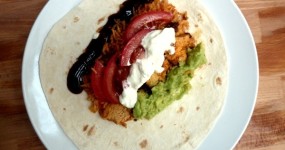 The quest for Mex part 2 – Feisty Chicken Burritos posted on December 21, 2010
The quest for Mex part 2 – Feisty Chicken Burritos posted on December 21, 2010  Salat Hatzilim posted on January 28, 2011
Salat Hatzilim posted on January 28, 2011  Patricia Coffee Brewers, Melbourne posted on November 8, 2013
Patricia Coffee Brewers, Melbourne posted on November 8, 2013 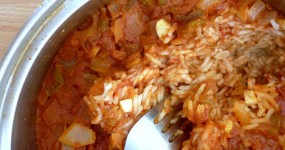 The quest for Mex part 1 – Mexican Red Rice posted on December 17, 2010
The quest for Mex part 1 – Mexican Red Rice posted on December 17, 2010  Coffee in Buenos Aires – Srsly, WTF?? posted on July 30, 2011
Coffee in Buenos Aires – Srsly, WTF?? posted on July 30, 2011  Kosher Whole Orange Cake posted on July 5, 2011
Kosher Whole Orange Cake posted on July 5, 2011
Disclaimer:
All opinions in this blog are mine, an everyday, real-life person. I do not accept payment for reviews and nor do I write sponsored posts. I do not endorse the content of the comments herein.

